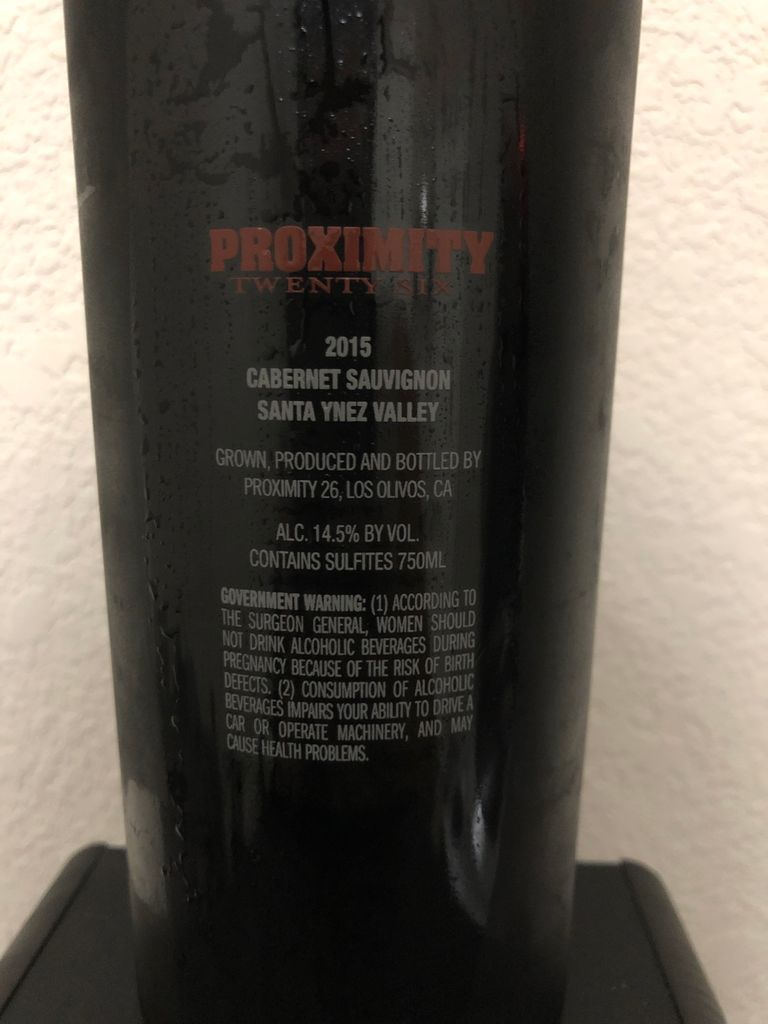
External search
Google (images)
Wine Advocate
Wine Spectator
Burghound
Wine-Searcher
Vintages
2020
2019
2018
2017
2016
2015
2014
2013
2012
2011
2010
2009
From this producer
Show all wines
All tasting notes
|
| Drinking Windows and Values |
| Drinking window: Drink between 2022 and 2029 (based on 13 user opinions) |
| Community Tasting History |
| Firestone Vineyard Producer websiteCabernet SauvignonCabernet Sauvignon is probably the most famous red wine grape variety on Earth. It is rivaled in this regard only by its Bordeaux stablemate Merlot, and its opposite number in Burgundy, Pinot Noir. From its origins in Bordeaux, Cabernet has successfully spread to almost every winegrowing country in the world. It is now the key grape variety in many first-rate New World wine regions, most notably Napa Valley, Coonawarra and Maipo Valley. Wherever they come from, Cabernet Sauvignon wines always seem to demonstrate a handful of common character traits: deep color, good tannin structure, moderate acidity and aromas of blackcurrant, tomato leaf, dark spices and cedarwood.
Used as frequently in blends as in varietal wines, Cabernet Sauvignon has a large number of common blending partners. Apart from the obvious Merlot and Cabernet Franc, the most prevalent of these are Malbec, Petit Verdot and Carmenere (the ingredients of a classic Bordeaux Blend), Shiraz (in Australia's favorite blend) and in Spain and South America, a Cabernet – Tempranillo blend is now commonplace. Even the bold Tannat-based wines of Madiran are now generally softened with Cabernet SauvignonUSAAmerican wine has been produced since the 1500s, with the first widespread production beginning in New Mexico in 1628. Today, wine production is undertaken in all fifty states, with California producing 84% of all U.S. wine. The continent of North America is home to several native species of grape, including Vitis labrusca, Vitis riparia, Vitis rotundifolia, and Vitis vulpina, but the wine-making industry is based almost entirely on the cultivation of the European Vitis vinifera, which was introduced by European settlers. With more than 1,100,000 acres (4,500 km2) under vine, the United States is the fourth-largest wine producing country in the world, after Italy, Spain, and France.California2021 vintage: "Unlike almost all other areas of the state, the Russian River Valley had higher than normal crops in 2021, which has made for a wine of greater generosity and fruit forwardness than some of its stablemates." - Morgan Twain-Peterson Central Coasthttp://www.ccwinegrowers.org/links.html
http://www.discovercaliforniawines.com/regional-wine-organizations/
http://beveragetradenetwork.com/en/btn-academy/list-of-winegrowers-association-in-central-coast-california-274.htm
Central Coast AVA WikipediaSanta Ynez ValleyThe Santa Ynez Valley AVA is the largest wine sub-region of Santa Barbara County and has the highest concentration of vineyards. The valley runs from east to west, between the Purisima Hills and the San Rafael Mountains in the north, and the Santa Ynez Mountains in the south. Although the valley is open to the Pacific Ocean in the west, the fact that it is relatively narrow means that limited cool air and fog is funnelled in. Low average rainfall and a very long growing season make the region ideal for quality wine production.
The diverse climates of Santa Ynez Valley mean that a wide array of wines is produced. The cool, western part of the AVA is predominantly planted with Pinot Noir and Chardonnay, accompanied by other aromatic white varieties. Botrytis cinerea (noble rot) is able to flourish here, allowing some outstanding dessert wines to be produced in suitable vintages. Further east, the cooling effect of the ocean is lessened as both vineyard elevation and average temperatures increase. This warmer part of Santa Ynez Valley is more suited to fuller-bodied grape varieties, such as Syrah and Merlot.
more ...s expected, Chardonnay and Pinot Noir thrive, while the more inland zones lay claim to Bordeaux varietals and some Rhone blends. |
|




